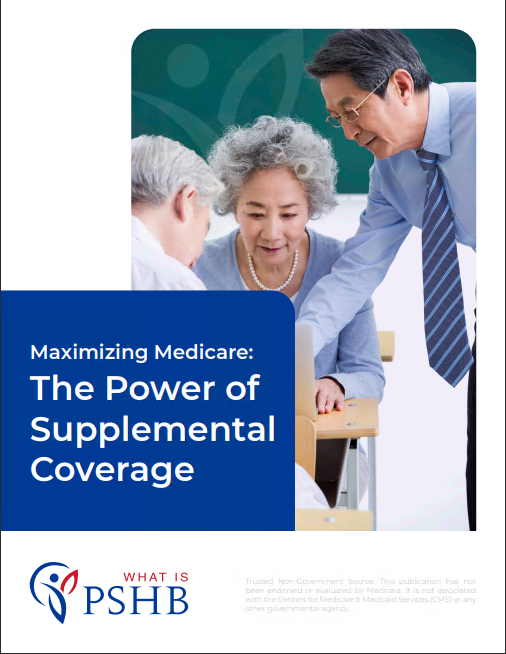Key Takeaways
-
Medigap premiums continue to rise in 2025, with higher costs affecting USPS retirees and employees transitioning to retirement.
-
Factors like age, location, and Medicare cost increases contribute to these rising premiums, making it essential to review your options carefully.
Why Are Medigap Premiums Increasing in 2025?
If you’re a USPS retiree or planning to retire soon, you’ve likely noticed that Medigap premiums keep climbing year after year. In 2025, costs are rising again, and several factors contribute to this trend:
-
Medicare Cost Increases – When Medicare Part A and Part B costs rise, Medigap insurers adjust their premiums to keep up.
-
Age-Related Premium Adjustments – Many Medigap plans use age-based pricing, meaning your premium increases as you grow older.
-
Inflation and Healthcare Costs – The overall cost of medical care continues to rise, affecting all forms of health coverage, including Medigap.
-
Claims and Risk Adjustments – As the insured population ages, claims increase, prompting insurers to raise premiums to cover expenses.
-
State Regulations and Market Trends – Some states impose additional rules that impact how Medigap plans set their rates, while overall market trends can also drive costs up.
Understanding these factors can help you anticipate future increases and plan your healthcare budget more effectively.
How Much More Will You Pay in 2025?
The exact amount your Medigap premium increases in 2025 depends on several variables, but here’s a general breakdown of expected changes:
-
Annual Increases of 4-10% – On average, Medigap premiums increase between 4% and 10% per year.
-
Age-Based Increases – If your plan follows an attained-age pricing model, you could see additional increases based on your age bracket.
-
Regional Variations – Where you live plays a role; some states see higher Medigap premium hikes due to localized healthcare costs.
-
Medicare Part B Cost Changes – Since Medigap plans supplement Medicare Part B, any increase in Part B premiums can indirectly influence your Medigap costs.
-
Plan Type Differences – Some Medigap plans experience larger price jumps than others, depending on the level of coverage provided.
-
New Enrollee vs. Existing Enrollee Pricing – If you’re enrolling in Medigap for the first time, you might pay higher premiums than someone who has been on the same plan for years due to new policy adjustments.
While individual rate changes vary, it’s safe to say that most USPS retirees and employees transitioning to retirement will see their Medigap costs rise this year.
What Can You Do to Manage These Costs?
Even though Medigap premiums are increasing, there are ways to control your expenses and ensure you’re getting the best value for your coverage.
1. Review Your Current Coverage
Take a close look at your existing Medigap plan. Ask yourself:
-
Does it still meet my healthcare needs?
-
Have my medical expenses changed?
-
Is my premium increasing more than expected?
-
Are there benefits I no longer need that I’m paying extra for?
2. Compare Other Medigap Options
If your premium is rising significantly, it may be worth exploring other Medigap plans. While you may need to undergo medical underwriting when switching, you could find a plan that offers similar benefits at a lower cost.
-
Check different pricing structures (community-rated vs. attained-age pricing).
-
Look for plans that offer cost-sharing features to reduce premiums.
-
Compare plans across different states if you are considering relocating.
3. Consider Timing Your Enrollment Wisely
-
If you’re new to Medicare, your Medigap Open Enrollment Period (the first six months after enrolling in Part B) offers guaranteed acceptance with no medical underwriting.
-
If you missed this period, check if your state offers additional enrollment protections that allow you to switch plans without health screenings.
-
Consider enrolling before your next birthday if your plan has age-based increases.
4. Evaluate Your Healthcare Needs
-
If you rarely use medical services, you might not need a high-coverage plan.
-
If you frequently visit doctors or require specialized care, a more comprehensive plan might be worth the higher premium.
-
Look at how often you use hospital services and preventive care to determine the best balance between cost and coverage.
5. Take Advantage of FEHB Coordination
As a USPS retiree, if you still have access to the Postal Service Health Benefits (PSHB) program, evaluate how it interacts with Medicare and Medigap. Some enrollees find that they can balance coverage between PSHB and Medicare without needing a Medigap plan at all.
-
If PSHB provides adequate secondary coverage, you may not need Medigap.
-
Compare PSHB prescription benefits with standalone Medicare Part D options.
-
Check if PSHB plans offer reimbursement incentives for Medicare enrollees.
The Role of Medicare Changes in Your Medigap Costs
Medicare undergoes changes every year, and these adjustments affect Medigap premiums. Here’s what’s different in 2025:
-
Medicare Part B Premiums – The standard monthly premium for Part B has increased to $185, up from 2024.
-
Medicare Part A Deductible – The hospital deductible is now $1,676 per benefit period.
-
Part D Prescription Drug Cap – A new $2,000 out-of-pocket maximum for prescription drugs helps lower medication costs for retirees, though it does not directly affect Medigap plans.
-
Higher Cost Sharing in Some Medicare Services – Copays and coinsurance amounts for certain services have been adjusted, which could lead to increased out-of-pocket expenses.
These changes emphasize the importance of reviewing your Medicare coverage annually, especially when Medigap costs are rising.
Will Medigap Premiums Keep Rising in the Future?
While it’s difficult to predict exact numbers, the trend of increasing Medigap premiums is likely to continue. Factors that could influence future rates include:
-
Ongoing increases in healthcare costs and Medicare expenses
-
Changes in Medicare policies that shift costs to private insurers
-
The aging population leading to higher utilization of medical services
-
Economic factors such as inflation and government funding shifts
-
Adjustments in risk pools due to changes in policyholder demographics
Planning for these long-term increases can help you avoid financial surprises down the road.
What’s Next? Take Control of Your Medigap Costs Today
With Medigap premiums increasing in 2025, now is the time to review your options and take proactive steps to manage your healthcare expenses. Whether you’re already retired from USPS or planning for the future, staying informed about your coverage choices can save you money and ensure you have the right plan for your needs.
If you need personalized guidance, speak with a licensed agent listed on this website to explore your Medicare and Medigap options.












